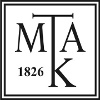Földvári, Sándor (2023) Scholarly Activity of Hajji Abdul Karim Germanus as Related to the Turkish Studies in Hungary. In: 6. Uluslararasi Sosyal Bilimler ve İnovasyon Kongresi 25/26 Şubat 2023. Ankara. Congress Book. IKSAD Publishing HouseInstitution of Economic Development and Social Researches, Ankara, pp. 895-918. ISBN 9786256404687
|
Text
Foldvari_2023a_Germanus_IKSAD_Ankara.pdf - Published Version Download (2MB) | Preview |
Abstract
Hungarian studies of the Oriental peoples and cultures rose to world class in the second half of the 19th century and reached the heydays in the middle of the 20th c. The Turkologist Ármin Vámbéry, by his Turkish name Efendi Reshid, was wandering from Istanbul to Bokhara and then across Afghanistan returned to Persia, then moved to Great Britain. The results of Vámbéry’s research were valuable in the field of the religious studies, the ethnography of the Turkish peoples, while his linguistic results already appeared in several aspects false. Vámbéry (Reshid)’s most famous pupil and follower was Ignácz Kúnos. He studied Arabic and Turkish also Persian, albeit his main field of research was the study of the Turkish folklore. He became his activity already in the 19th century and published a valuable collection of folktales of the Turkish peoples. His great record was the collection of tales from Ada Kaleh, the a small island in the Danube river, which was inhabited by Turks with special Turkish cultural heritage thus their folklore was of great significance. We spoke about these scholars in more details in our previous lecture, which was presented at the 3. International Antalya Scientific Research and Innovative Studies Congress February 13-14, 2023 Antalya, Türkiye. Now we only summarize the way which led to the scholarly activity of such a prolific scholar as Germanus. Professor Vámbéry’s pupil was Julius Abdul Karim Germanus, who then was Kúnos’s pupil, too, while Kúnos was a pupil to Vámbéry a well. Thus, Vámbéry grounded the Turkish studies in Hungary, his most prominent pupil Kúnos grounded the academic Turkish studies in Hungary, then both of them were professors to the young Germanus. He first studied and researched the Turkish literature and then he turned to the Quran studies. He was invited by Rabindranath Tagore to Santiniketan, the multicultural university, and then was invited by the King of Saudi Arabiya where he completed his Hajj pilgrimage, as well. He was a world-wide recognized scholar, albeit at home in Hungary he was criticized by some jealous colleagues, for he became a Muslim thus got even more insight into the Islam culture and spirit. His pupil was Győző (Yusuf) Gerő, whose activity happened in Hungary after the Second World War, and within the frameworks of the Socialism, therefore he lost opportunities for travelling abroad and contacting the foreign colleagues beyond the borders, for this reason he dealt with the architecture from the Turkish time in Hungary, and excavated many buildings which were built by the Turks in Hungary. Julius Abdulakarim Germanus studied Turkish already when he was yet a high-school kid, and went to the aforementioned professor Vámbéry (Efendi Reshid) who evaluated the gifted, clever young men. Then he entered the Academy of Oriental Sciences in Budapest, Hungary, which institution was led by aforementioned professor Ignác Kúnos. He went to Istanbul with support of the aforementioned Ignác Kúnos, hence it was logical that the young Germanus followed his master and dealt with the Turkish folklore and literature. His first scientific publication appeared in 1905, in a publication of his professor of Turkish studies, Ignác Kúnos, as a subchapter under the title “Arabic and Persian Elements in Turkish”. Then he followed his master, Kúnos, publishing the “Turkish-Ottoman language book”, 1925; as we highlighted in the previous lecture, prof. Kúnos published a grammar-book of Ottomanli Turkish, with Arabic script, and his pupil Germanus published a new one, too. In the early 30-ies of the last century, Abdul Karim Germanus got an invitation from the famous Indian Poet, Rabindranath Tagore, for a professorship at the multicultural university in Santiniketan, India, where Abdul Karim Germanus lectured a course about the Noble Quran. He converted to the Islam there, in India. He got there his Muslim name Abdul Karim. Then he became a great supporter of the Muslim culture, such as the first mufti of the Hungarian Islam community, which was founded by him in Budapest. He completed his main work on the Turkish culture there, in India, when he enjoyed good circumstances for the scholarly work: “The Role of Turks in Islam”, I–II., Hyderabad, 1933–34; “The Awakening of Turkish Literature, I–II.”, Hyderabad, 1933; and still some other works to be mentioned in the full paper. Julius Abdul Karim Germanus was known rather as a scholar of the Arabic literature and the Islam studies. He published more than twenty books, he was invited by the King of Saudi Arabia, and he completed the Hajj pilgrimage in Mecca three times, also when he was already 81 years old. Albeit he was not only an Arabist and a scholar of the Quran, but a great expert of the Turkish culture and history, too. We are focusing in our paper on the Turkish-related works by Germanus.
| Item Type: | Book Section |
|---|---|
| Uncontrolled Keywords: | Turkish Studies, Hungary, Germanus, Santiniketan, Hungarian Muslims |
| Subjects: | G Geography. Anthropology. Recreation / földrajz, antropológia, kikapcsolódás > GR Folklore / etnológia, folklór, kulturális antropológia H Social Sciences / társadalomtudományok > HM Sociology / társadalomkutatás H Social Sciences / társadalomtudományok > HN Social history and conditions. / társadalomtörténet |
| SWORD Depositor: | MTMT SWORD |
| Depositing User: | MTMT SWORD |
| Date Deposited: | 25 Jun 2025 12:23 |
| Last Modified: | 25 Jun 2025 12:23 |
| URI: | https://real.mtak.hu/id/eprint/220443 |
Actions (login required)
 |
Edit Item |



